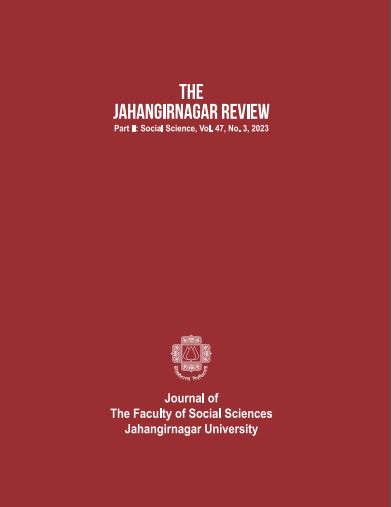Determinants of Efficiency and Inefficiency factors: An Analysis of Potato Farming in Bangladesh
Main Article Content
Abstract
Bangladesh government encourages farmers to produce more potato (rabi crop) for reducing pressure on rice consumption, reducing potato import costs and increasing potato export for foreign currency. It requires more efficient use of farmers' resources. This study focuses on determination the efficiency and inefficiency factors of potato farming in Bangladesh. This may help farmers decide whether to improve efficiency without introducing new technologies or increasing resources. The Cobb-Douglas Stochastic Frontier Analysis is used to estimate four districts' technical, allocative, and economic efficiencies of potato farming. From the analysis, all input factors (land, labor, tilling, seed, fertilizer, irrigation pesticide, and vitamin) positively and significantly affect potato production. The source of inefficiency parameter (0.853) is statistically significant, implying that socio-economic and infrastructure factors determine the inefficiency of potato production. Except for family size, land fragmentation, de-weeding, access to credit, cold storage, education, training, experience, and age contribute significantly to TE, AE, and EE in potato farming. To operate at a full efficiency scale, a farm can improve 36 percent economic efficiency, 25 percent allocative efficiency and 14 percent technical efficiency without changing or improving cultivation technologies. This study finds that farms are more technically efficient among three efficiencies and farms need to pay more attention to improve economic and allocative efficiencies. Further research could examine whether efficiency factors explain differences in efficiency and how farmers can adapt to new programs related to training and education.

